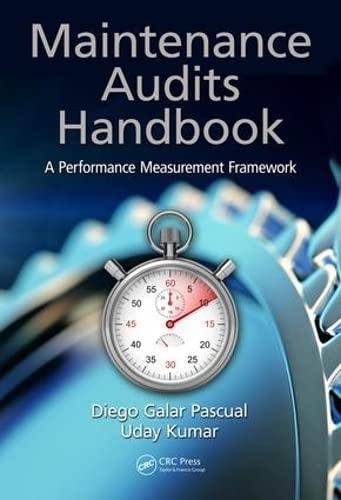Question
1. True or False: A contribution margin income statement classifies costs by function; that is, costs are classified as either product costs or period costs.
1. True or False: A contribution margin income statement classifies costs by function; that is, costs are classified as either product costs or period costs.
2. True or False: The times-interest-earned ratio is also known as interest-coverage ratio.
3. Which of the following is a capital budgeting method?
A) return on assets
B) net present value
C) inventory turnover
D) return on equity
4. Which capital budgeting method uses accrual accounting, rather than net cash flows, as a basis for calculations?
A) payback
B) accounting rate of return
C) net present value
D) internal rate of return
5. Which of the following is used to charge the cost of direct labor to the production?
A) Debit for standard quantity for actual production times standard cost per hour
B) Credit for standard quantity usage for actual production times actual cost per hour
C) Debit for actual quantity times standard cost per hour
D) Credit for standard quantity for actual production times standard cost per hour
6. True or False: CVP analysis assumes that the selling price per unit does not change as volume changes.
7. The management technique whereby managers concentrate on results that are outside the accepted parameters is called management by:
A) variance.
B) standard.
C) exception.
D) budget.
8. Which of the following describes the term time value of money?
A) Money can be used only at certain times and only for certain purposes.
B) Money loses its purchasing power over time through inflation.
C) Wasted time can result in wasted money.
D) Value of a dollar received today will be higher than that received after some time.
9. The relationship between total liabilities and total assets is known as the:
A) debt ratio.
B) debt to equity ratio.
C) current ratio.
D) earnings per share.
10. An unfavorable sales volume variance in operating income suggests a(n):
A) increase in number of actual units sold.
B) decrease in number of actual units sold when compared to the expected number of units sold.
C) increase in variable expenses per unit.
D) decrease in fixed costs.
Step by Step Solution
There are 3 Steps involved in it
Step: 1

Get Instant Access to Expert-Tailored Solutions
See step-by-step solutions with expert insights and AI powered tools for academic success
Step: 2

Step: 3

Ace Your Homework with AI
Get the answers you need in no time with our AI-driven, step-by-step assistance
Get Started


